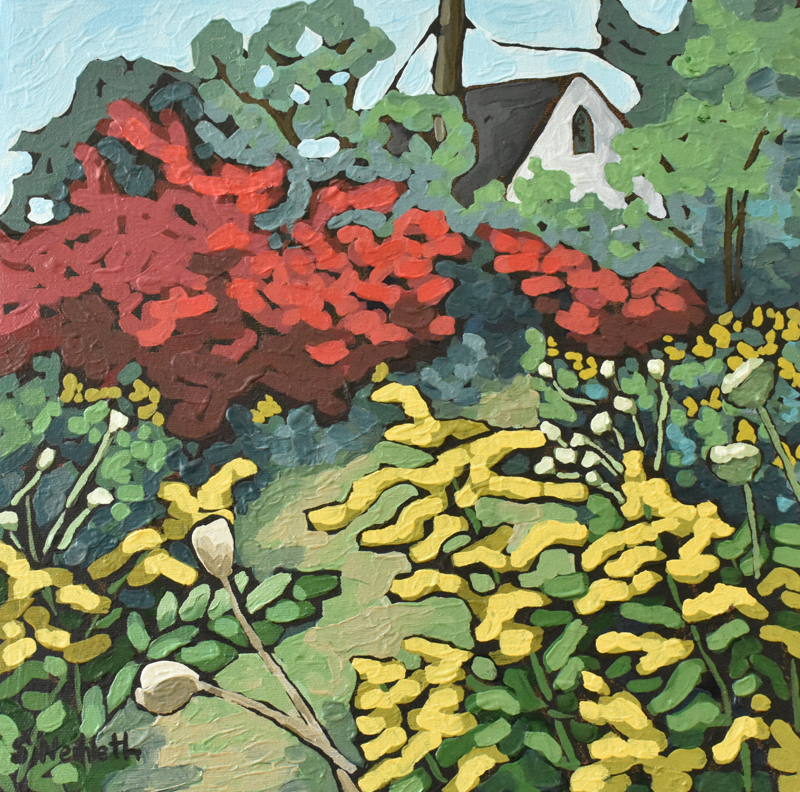
Story based on a conversation with Jon Hayes, Program Director of the High Park Nature Centre
This is a space in the city where kids can have the freedom to explore, tinker, build and play. During the summer months goldenrod, thistle, grasses and shrubs grow high above the kids heads, creating a convoluted network of trails. Because the area is completely fenced kids can explore nature without us leading them to certain things, following only their natural curiosities. Sometimes we give them a magnifying glass, a bug net or a jar. They always find really interesting things. I have done a lot of learning here as well.
One year we found all these blue splotches on the ground and thought someone was doing an activity with blue food colouring. We started noticing that it was usually next to rabbit scat. We did some research and discovered that when rabbits eat the bark of a buckthorn shrub their urine reacts with the sunlight and turns blue. It was a totally mind boggling discovery for us!
Goldenrod is one of the main plants here. It’s a great food and shelter source for many species of insects, so there’s a surprisingly rich biodiversity in this area. There’s also a solitary bee cabinet installed here, created by Sarah Peebles, an environmental artist. Solitary bees and wasps lay their eggs within cavities in the cabinet. You can open a door and see all of the cells, and you can plug in earphones and listen to the sounds of their bodies resonating.
This is also a place for play. One game that works really well in here is called “Coyote Howl”. One person gets chosen and they run and hide, and everyone tries to find that person. The kid hiding can give them a clue by howling like a coyote. When they eventually find the person hiding, they hide with them until almost everyone is hiding like a coyote pack. When the last person finds the group of hiding kids we all jump out! Within a space like this, even a simple game of tag becomes a nature game, because the feelings of trying to get away and trying to chase are the same impulses that animals must feel.
This area used to be a lawn bowling green, which is why we still call it “The Bowling Field”. Through years and years of doing small naturalization projects, and also by just letting it grow, it has turned into something remarkable. We have been creating a similar type of area called “OURSpace” near our new location at the Forest School to create a space for kids and adults to learn, play and restore the black oak savannah plant community.
